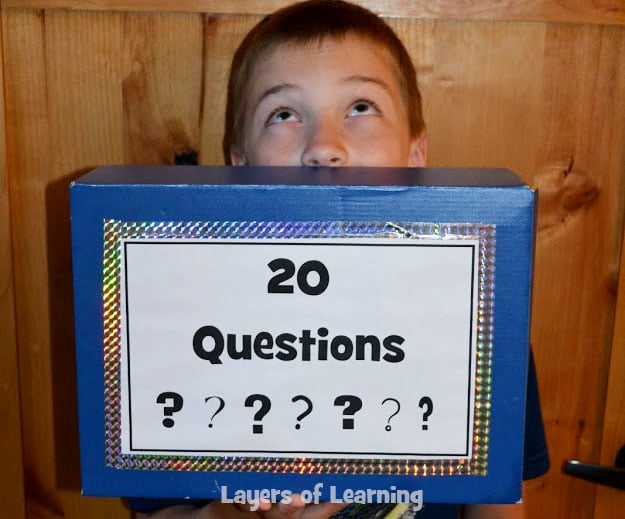We love games in our homeschool! We play lots of review games to help us remember what we’ve learned, but we also play some games to introduce a unit. Layers of Learning units last us two or three weeks each, so at the beginning of a unit you can choose one simple game to get your kids geared up and excited to learn. Asking the kids to actively look and pay attention to something will help them keep focus and have a bit more investment in what you’re learning about as a family. It definitely piques my kids’ curiosity and gets everyone excited to learn something new. Here are a few games we like to play to introduce a unit.
Answer Hunt
To play answer hunt you have to prepare some Index cards with answers written on them that are hidden around the house. Ask a question the kids likely won’t know as an introduction to the unit and tell them to listen and pay attention to find out what the answer is. For example, if we were preparing to study the skeletal system from Layers of Learning Unit 2-7 I might ask the kids to pay attention to find out what the name of the bone on our knees is called. “Patella” would be written on an index card, along with 8-12 other names of bones, all hidden around our house.
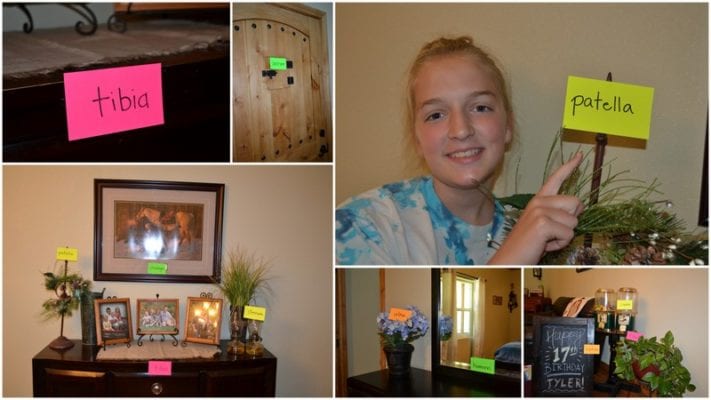
The first kid to identify the correct answer and then find the correct card to bring to me wins and earns house points. Anyone who brings the wrong card is immediately disqualified and loses their chance for house points in that round (this keeps them from randomly grabbing a card to guess instead of paying attention!).
Often I offer house points to others after the first one is found. Either I give another question or I tell everyone to go grab a card, look up where that bone is, and come tell us all for house points. You can use this same game for any of the Layers of Learning topics.
Seek
To play Seek I just find an image I like from one of the books in our book basket. I photocopy the page and cut out the image so it’s standing alone. Then I hold it up for the kids to see and tell them that this is the item we’re seeking during this unit. As they explore the book basket, do projects, and work and read with me, they watch for the picture. The first one to spot it when we come across it gets house points.
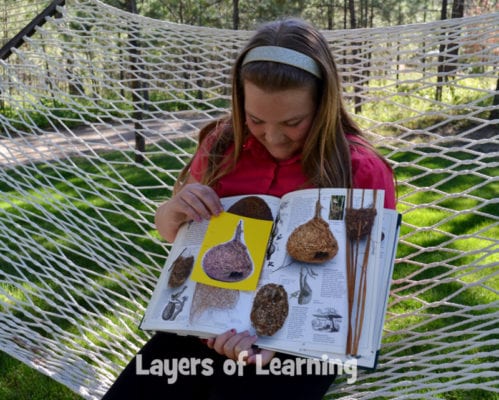
During our study of WWII in Unit 4-11, we played this using a Nazi flag as our photo. My kids were unfamiliar with what a swastika was and I wanted to make sure they knew what that symbol meant and all the meaning and horror behind it. Later that week we were watching “The Sound of Music” and my youngest son spotted the flag with the swastika in a scene from the movie! He won even though he didn’t find the exact image from the book!
 Twenty Questions
Twenty Questions
This is a really simple game, but my kids love it. To play you need a small box; a shoebox works perfectly. I used a colorful box and attached a “20 Questions” label right on the box.
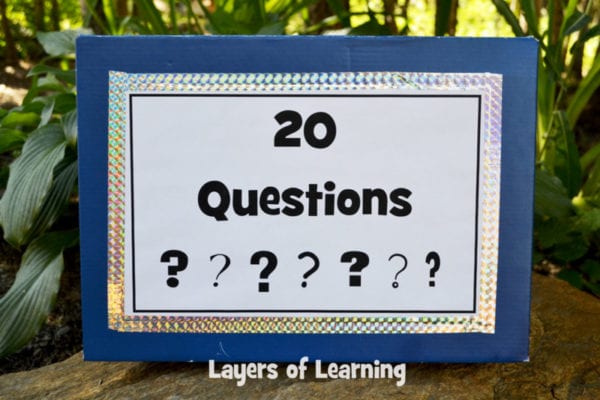
For each game, I put an item in the box that has something to do with our unit. For example, if we are studying fossils, I might put a toy dinosaur in the box. If we are studying the Greeks I may put a mask in the box. When we studied Mexico I used a little marionette we got on one of our trips there. Foreign money or small flags work well too.
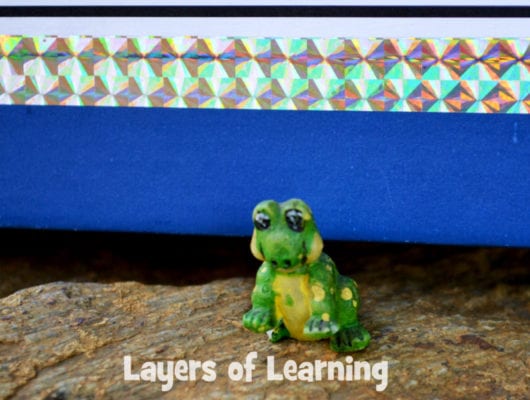
Once the item is hidden within the box, the kids have 20 opportunities to ask yes/no questions to try to solve the mystery of what is in the box. I answer only yes or no. If they guess the item before running out of questions, they win and I award them as many house points as they have questions remaining. So if they guess it in 11, they have 9 more questions to go until 20, so they get 9 house points.
If it’s really hard, sometimes I offer a clue at the beginning. If I hid a T-Rex dinosaur toy I might begin by saying, “The one in this box is very small and harmless, but in real life, this thing would be very large and ferocious.”
Word Detective
This game helps kids to learn some of the keywords from a unit that they might not be familiar with. Give kids a list of big words that are missing some of the letters. As you go about reading and learning from your unit, they will watch for those words and see if they can first identify them, fill in the missing letters, and then define them. By the end of the unit, they will be awarded house points for as many as they find. This printable Word Detective Game goes with the history section of Layers of Learning Unit 1-3, all about ancient Europe.
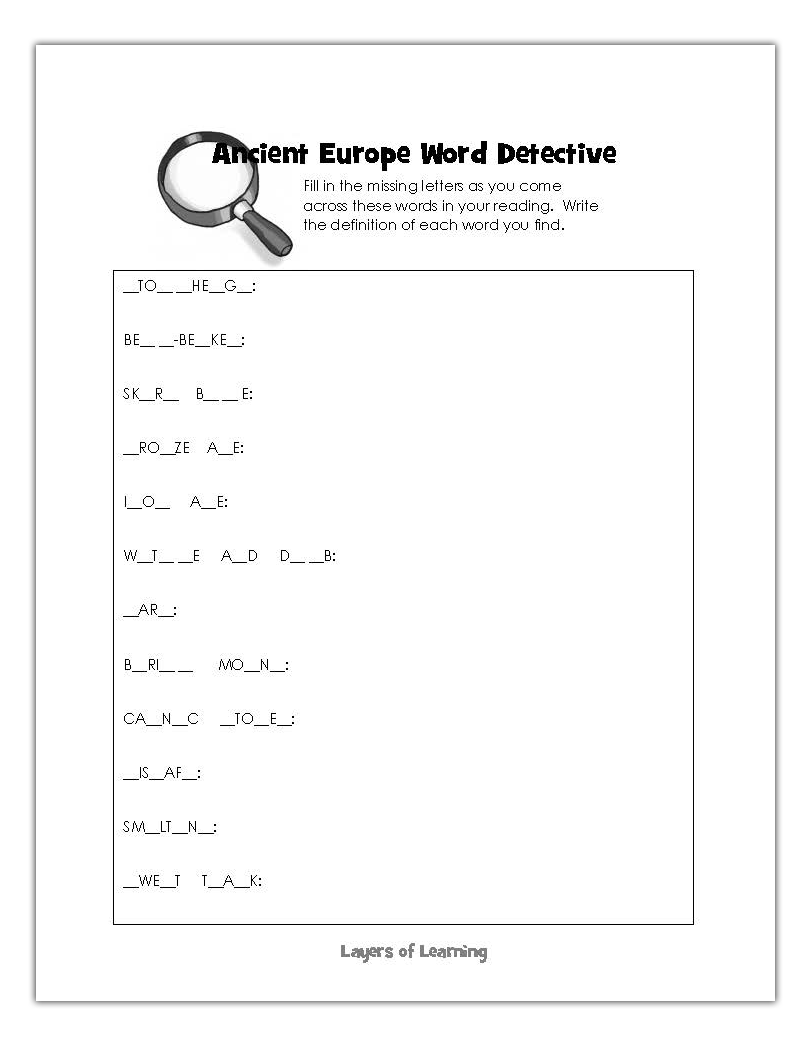
Memory Tray
Place about ten items on a tray that all have to do with your unit topic. For example, if you are studying mammals, you might use ten small animal toys. If you are studying volcanoes, you might have several igneous rocks, a picture of lava, a puzzle piece of the Hawaiian Islands, some ash, a mountain made of play-doh, and some word cards with volcano vocabulary. Let your kids see the tray of items for about 30 seconds, then take it away. Have them list as many of the items as they can remember. Award house points for every item they can recall.
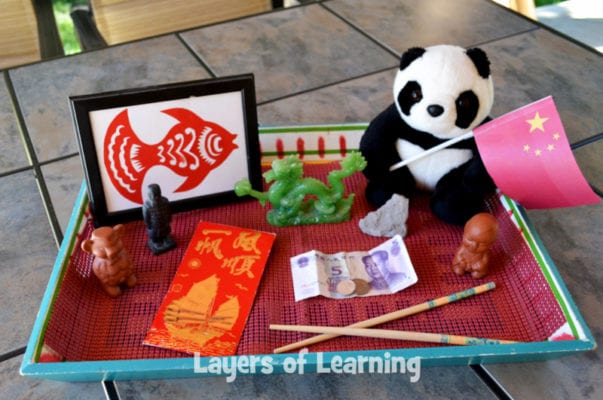
Search & Find
Search & Find takes a little bit of preparation and forethought, but it can be a great teaching tool. You just sketch or use clipart to include 6-8 images on a sheet of paper with pictures of things they may come across during the unit. For example, if you’re learning about the Phoenicians you might have these items: a map of the Meditteranean Sea, a sailboat, ivory, an ABC chart, purple fabric, a cedar tree, and a picture of Hannibal. Here’s a printable Search and Find Game to play while you learn about the Phoenicians in Layers of Learning Unit 1-7.
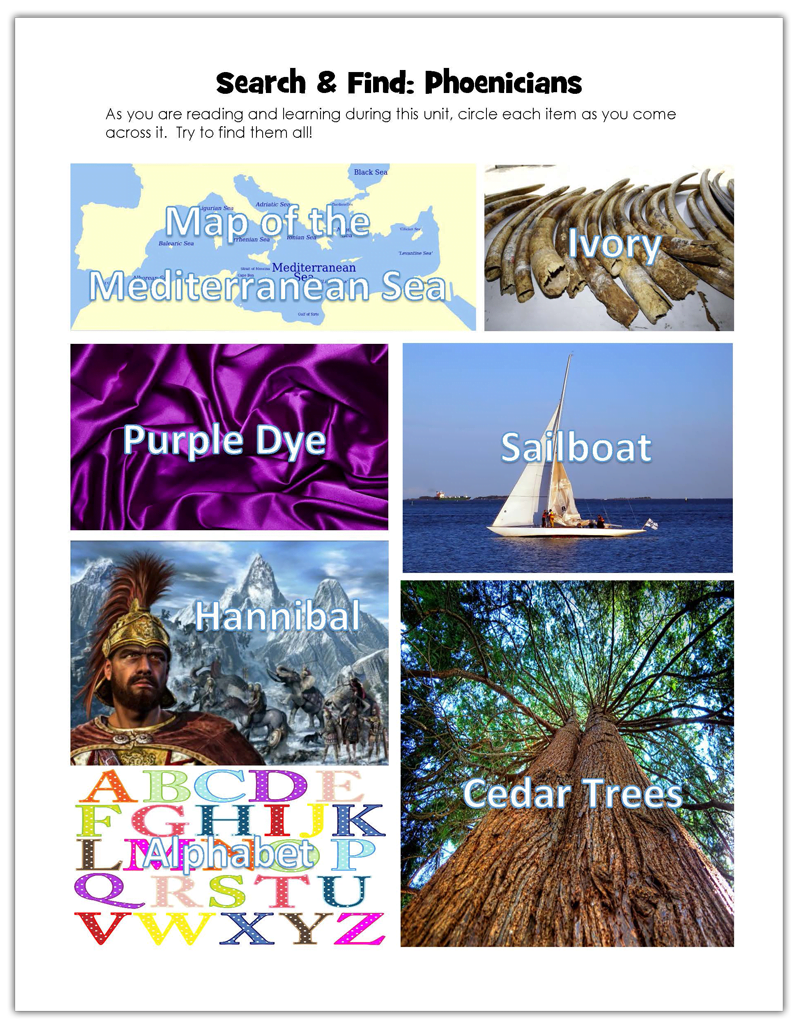
As you are reading and learning throughout the unit you each try to find all of the items. You circle each one you find, trying to get them all. Each kid gets house points for each item they successfully find. (Find out about our house points and other ways Harry Potter has infiltrated our homeschool here!)
The Games We Play
We play games to introduce a unit or to review what we’ve learned all the time. I don’t spend a ton of time planning or preparing these games. Just having a handful of the same familiar games cuts out the need for a lot of explanation of rules and confusion. They are also quick to plan and put together when you’ve gotten used to the game. Choose a few fun favorites and use them over and over as you start new a new unit. With fresh content, it’s still a new game!
Begin with our curriculum guide and then see the units we have to offer in our catalog. We also have an excellent All About Homeschooling page with lots of great advice for homeschoolers about creating a happy, productive, fun homeschool.
Get a Free Unit
Choose between the first unit in each Layers of Learning subject to try for free when you sign up for the newsletter.
We never spam and you can cancel your subscription at any time.


